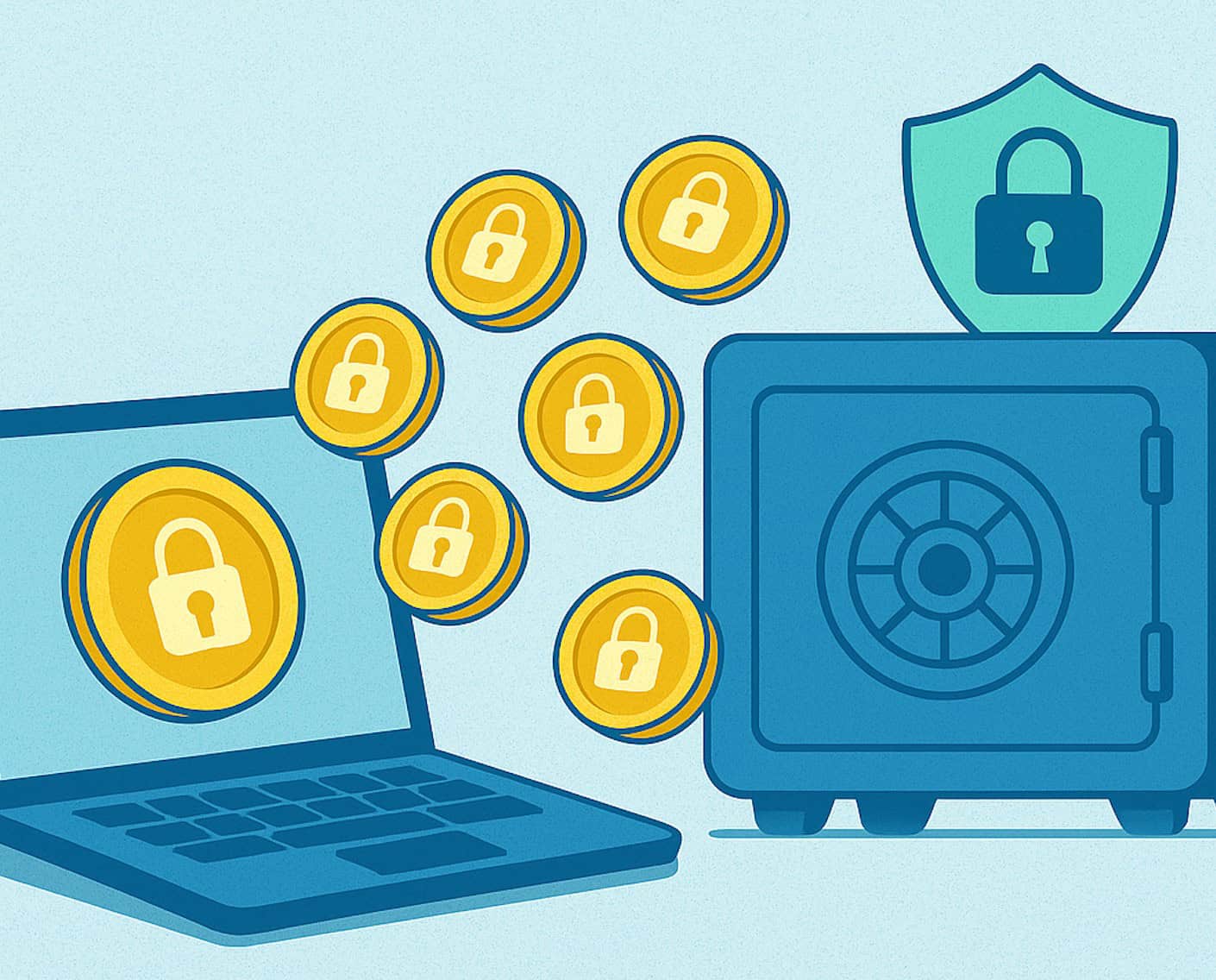A practical guide for merchants on tokenization, vaulting, PCI, and beyond.
When a customer hands over their card, they’re not just trusting you with a purchase, they’re trusting you with their security. That trust is fragile. A single breach, stolen card, or compliance misstep can cost thousands in penalties, months of cleanup, and long-lasting reputational damage.
But the truth is, businesses can’t afford to avoid storing cards. Whether you’re a dealership with service plans, a contractor with ongoing billing, or a restaurant handling regular catering clients, card-on-file payments are the backbone of repeat business. The challenge is finding a way to store and use that data safely, without exposing yourself to unnecessary risk.
That’s where tokenization, vaulting, PCI compliance, and a few supporting best practices, come in. In 2025, secure card-on-file isn’t optional. It’s the foundation for growth, customer loyalty, and staying ahead of rising fraud threats.
The Hidden Risks of Storing Raw Card Data
To a cybercriminal, raw card data is digital gold. If a merchant holds on to card numbers, even accidentally, they’re taking on enormous risk. One breach can expose thousands of customers, triggering fines, lawsuits, and chargebacks that easily exceed the original sale value.
And it’s not just large retailers at risk. Small and mid-sized businesses are frequent targets because hackers assume they’re less protected. Even without a breach, failure to comply with PCI DSS (Payment Card Industry Data Security Standard) can cost $5,000–$100,000 per month in penalties and may lead to losing your ability to accept Visa or Mastercard.
The lesson? If you’re still handling raw card data, you’re carrying weight you don’t need. Modern payment infrastructure is designed to offload that responsibility so you can stay compliant without becoming a security expert.
The Lifecycle of a Saved Card
To understand how secure payments work, it helps to follow a card from the moment it’s entered to the moment it’s charged. At every step, different tools protect you and your customer:
- At Entry: Encryption & Tokenization
- Card details are encrypted immediately so they can’t be intercepted in transit.
- A random “token” replaces the real card number, so your system never touches the sensitive data.
- At Storage: Vaulting
- Instead of saving cards locally, tokens are stored inside a PCI-compliant vault maintained by your provider.
- You can safely offer “card on file” for subscriptions, recurring invoices, or one-click checkouts without ever holding the real card data.
- At Use: PCI Compliance & Fraud Controls
- When the token is charged, it’s mapped back to the card in the vault.
- PCI rules, fraud monitoring, and authentication (like 3-D Secure) ensure the transaction is valid and compliant.
By thinking of card-on-file as a lifecycle, you can see how tokenization, vaulting, and PCI aren’t separate boxes to check. They’re layers of defense that work together to make secure payments seamless.
Tokenization: Making Data Useless to Hackers
Think of tokenization like a safety lock. Instead of storing the actual 16-digit card number, your processor generates a unique token, a stand-in that looks like a card but has no value if stolen.
- How it works: Customer enters their card → processor creates a token → your system saves the token, not the card.
- Why it matters: Even if your systems are compromised, the attacker sees meaningless strings, not real account data.
- Business upside: Tokens let you process payments without ever holding liability for the card number itself.
In short, tokenization cuts hackers out of the equation before they even start.
Vaulting: Secure Card-on-File Without the Risk
If tokenization is the lock, vaulting is the fortified vault itself.
A vault is a PCI-compliant environment, managed by your payment provider, where encrypted card data (and its tokens) are stored. This setup allows you to offer the convenience of saved cards without ever directly storing them.
Why vaulting matters in 2025:
- Recurring billing: trades, contractors, and service providers with monthly plans.
- Subscriptions & memberships: gyms, wellness clinics, salons.
- Dealership programs: service plans, warranties, or multi-year agreements.
- Restaurants & catering: repeat clients who expect frictionless ordering.
With vaulting, you can offer modern conveniences like one-click checkouts and automatic billing while staying safely out of PCI “high-risk” territory.
PCI DSS Compliance: The Guardrails
The Payment Card Industry Data Security Standard is the global rulebook for handling cardholder information. Every business that accepts card payments, from a small café to a multi-location dealership, is subject to PCI.
Key points merchants need to know:
- Compliance isn’t optional: fines and card acceptance bans are real risks.
- Scope matters: the less raw data you store, the lighter your compliance burden.
- Outsourcing helps: tokenization and vaulting drastically reduce what you’re personally responsible for.
In 2025, PCI DSS is coming into effect with stricter requirements around authentication, encryption, and monitoring. Businesses that rely on modern providers will find themselves better prepared than those still using outdated systems.
Beyond the Basics: Trends Shaping Security in 2025
While tokenization, vaulting, and PCI are the backbone, several new developments are shaping how merchants think about security this year:
- AI-powered fraud attempts: Criminals are using machine learning to mimic customer behavior. Real-time fraud monitoring is more important than ever.
- Consumer expectations: Gen Z and Millennials care deeply about transparency. They’re more likely to choose businesses that communicate how their data is protected.
- Regulatory pressure: Governments worldwide are increasing scrutiny on data protection. Fines aren’t just from card brands, privacy regulators are now involved.
By staying ahead of these trends, you protect not just your business but also your competitive edge.
The Business Benefits Beyond Security
Strong payment security isn’t just about avoiding penalties, it actively drives growth:
- Customer Confidence
Customers are more likely to return when they trust you to protect their data. - Faster Checkouts
With vaulted cards, transactions take seconds, reducing cart abandonment. - Recurring Revenue
Secure card-on-file enables memberships, subscriptions, and financing. - Operational Efficiency
Less manual billing, fewer chargeback headaches, smoother reconciliation. - Competitive Advantage
By leading with security, you position your business as forward-thinking and trustworthy.
How Does Your Processor Support You
At Rescue Payments, we know merchants don’t want to spend their time reading compliance manuals. You just want payments that are safe, seamless, and fully compliant.
That’s why every system we deploy includes:
- Automatic tokenization of every transaction.
- PCI-compliant vaulting for safe card-on-file storage.
- Reduced PCI scope, so you don’t carry the compliance burden.
- Fraud protection tools to keep you a step ahead of new threats.
We handle the backbone of security so you can focus on your business, not on becoming a compliance expert.
Security is Trust, and Trust Builds Business
Every transaction is more than a payment; it’s a promise. In 2025, with fraud rising and consumer expectations higher than ever, businesses can’t afford to cut corners on payment security.
By embracing tokenization, vaulting, PCI compliance, and emerging protections, you’re not just meeting industry requirements. You’re building customer confidence, enabling recurring revenue, and future-proofing your business.
At Rescue Payments, we make it simple. Book a call today and see how our secure, compliant solutions can give you, and your customers, peace of mind.

